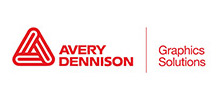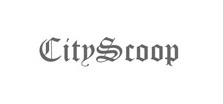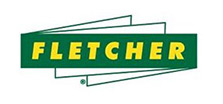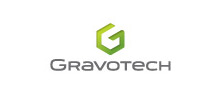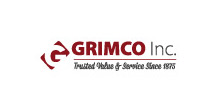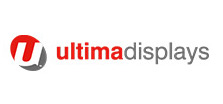Choosing the Right Sign Material for The Job
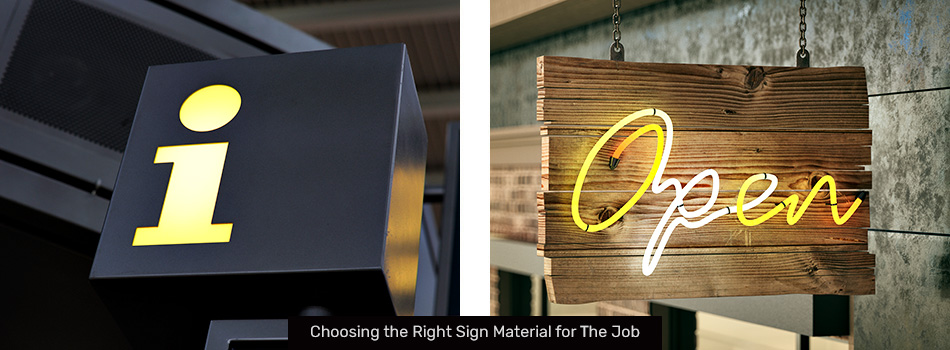
A sign, regardless of its message or placement, reflects the character of a business. When properly designed, it can help you create and reinforce an endearing and commanding impression even to people who are encountering your brand for the very first time. Therefore, in designing a sign, the best sign company should ensure that the sign not only meets its set objectives but also adheres to its budget estimate. There are many factors to consider in making the ideal sign, including size, colour scheme, shape, placement etc. However, the best sign company knows that choosing which material to use is probably the most important and most difficult.
At The Sign and Graphics Manufaktur, we draw on our long experience and extensive expertise in selecting the best material for your application and ensuring that your sign achieves its objectives within your budget. The many sign material types that our experts will discuss with you include the following:
1) ACM
ACM (aluminum composite material) is made of thin sheets of aluminum that sandwich a polyethylene plastic core. This material combines the professional appeal and durability of aluminum, as well as impressive rigidity and strength. It is not only stronger than solid sheets of aluminum of equal thickness but also more economical. ACM has impressive capability in resisting moisture and high heat, making it ideal for outdoor wall or post and panel signs.
2) Plexiglass/Acrylic
This sign material is made from a glass substitute plastic known as cast polymer. It is transparent and durable, thereby ideal for 3D lettering and backlit signs. This material can provide an upscale look fit for image-conscious businesses for their lobby displays, such as acrylic displays with standoffs.
3) Aluminum
This is an excellent long-term choice for sign material. Featuring a baked enamel surface or clear finish, corrosion-proof aluminum signs are incredibly durable. This makes aluminum ideal for fence, building, real estate, parking-lot and traffic signs. Additionally, for a more modern look, brushed aluminum works great in lobby and architectural signs, among other applications.
4) Calendered Vinyl Film
Calendered vinyl, thicker than cast vinyl alternatives, shows better abrasion resistance and also adheres better on flat and gently curved surfaces. It is, therefore, a great economical solution for many permanent indoor and temporary outdoor signs. Some of its popular applications include vehicle lettering, floor graphics, cut-vinyl letters and promotional signage. It is also used for small decals on windows or vehicles.
5) Cast Vinyl Film
Even though cast vinyl is thinner than calendered vinyl, it is actually more durable and long-lasting. It tolerates extreme conditions better than calendered vinyl and also conforms well to irregular surfaces. Due to its flexibility, cast vinyl is ideal for vehicle wraps that need to conform to complex curved surfaces while maintaining a paint-like finish. It can be digitally printed to match any design or offered in solid colours.
6) Corrugated Plastic
This waterproof and affordable material is often referred to as Coro or coroplast. It is popular for yard signs used for elections, contractors and real estate agents.
7) Fabric
Fabric is often highly economical. Additionally, digitally printed polyester, nylon and other fabrics offer accurate images and colour reproduction. Fabric is therefore popular for outdoor and indoor banners, pennants and flags. It is also preferred in diverse applications such as fine art, canvases and branded awnings.
8) Foamcore
This material is made from polystyrene foam faced with paper and is often referred to as Gatorfoam or foam board. It is lightweight though rigid and is fairly economical. These properties make it ideal for easel signs, office displays and other temporary signs. It is also ideal for mounting digitally-printed colour graphics.
9) FRP Fiberboard
FRP (fibreglass reinforced plywood) fiberboard offers long-lasting durability and is often used as a substitute for MDO Plywood in outdoor signage applications.
10) MDO plywood
MDO (medium density overlay) plywood is incredibly strong and long-lasting. It features laminated wood and resin layers, which make it weather resistant. These properties make it popular for real estate and construction site signs as well as billboards. It is also used on A-frame signs and sandwich board signs.
11) Polycarbonate
Polycarbonate, such as Lexan, is a shatterproof and clear plastic that provides greater flexibility and durability than most plastics and is often used as a glass substitute. This makes it a popular material for exterior sign faces, including outdoor directories in areas subject to vandalism.
12) Polystyrene
This smooth, white material is also referred to as high impact polystyrene or styrene. It is typically ideal for indoor displays and signs. This is because it tends to become yellow and brittle in the sun.
13) PVC Foam
PVC (polyvinylchloride) foam is a smooth, lightweight, yet rigid and economical plastic that is ideal for indoor and outdoor applications. It is popularly used for point of purchase displays, menu boards and yard signs. It is also used for trade show signs that must be shipped from one event to the next.
14) Wood
Wood signs can be cut to shape, carved or left natural sandblasted or routed from cedar, redwood or other popular choices. Although largely used indoors, the application of weather-resistant, high-density urethane foam (HDU) enables extensive outdoor applications.
Don’t be sold on aesthetics – material matters. The best sign company will clearly explain all sign material options available, how they perform in your intended application as well as how each material receives and retains graphics. This will help you develop a durable, long-lasting sign with excellent graphics, and which actually serves its purpose.
If you are wondering, “Which is the best sign company near me,?” worry no more.
Factors to Consider When Choosing Sign Material
Cleaning & Maintenance
Every sign will need some cleaning and maintenance work done on it. How hard these tasks are depends on what materials you choose. For example, plastic sign material is extremely easy to clean: just wipe it down with a damp cloth, and you’re done. If you have a wood or metal sign, however, you might have to contend with things like rust, rot, and mold. This makes it much harder to keep these signs in good condition.
Lifespan
Different sign materials have different lifespans that affect how long you can expect your sign to last. It’s okay to go with less durable options for yard sign materials because these types of signs are frequently switched out for new ones. However, you’ll want to pick something more long-lasting for permanent sign installations, like your office sign or storefront sign.
When choosing between similar materials, lifespan should be one of the main considerations. Think about how long you need your sign to last and go with the material that fits that time frame best.
Repairs & Replacements
When your sign eventually does wear down or sustain damage, you’ll need to get it repaired or replaced. More durable materials will last longer and have fewer of these types of problems, but they’re among your most expensive options.
Flimsier materials are cheaper, but they’ll cost you more in the long run because of how quickly they wear out. Some materials can’t be repaired at all. Think about how much it will probably cost to keep your sign in good shape over the years and factor those costs into your budget when placing your order.
UV Exposure
Is your sign going to be placed in direct sunlight? If so, it’s going to absorb a lot of UV radiation over its lifetime. This can make the colours fade and even cause structural damage.
Choosing UV-resistant materials such as acrylic plastics and polycarbonates will help you avoid these problems. You can also apply special anti-UV finishes and treatments to your sign to improve its ability to stand up to the sun.
Indoor vs Outdoor
Indoor signs can be made of just about anything, but signs that are meant to be placed out in the elements must be made with outdoor sign materials. These signs are made to withstand a lot more wear and tear and will usually be made of water-resistant substances like plastic or stone.
Weather (Only for Outdoor Signs)
All outdoor signs will be exposed to the elements to some degree, but you may need to take your area’s weather conditions into consideration too. Does it rain or snow a lot where you are? Does it get hot and humid often? How much wind do you typically get? Whatever your local conditions are like, make sure you mention them to your sign company and choose materials that suit them.
AODA Signage
If you’re interested in creating signage that is AODA-compliant, you’ll need to use specific materials in your project. Signs made of metal or acrylic are great for incorporating Braille or raised lettering due to their hardness and durability. Materials like corrugated sign board material and coroplast, on the other hand, are not built for these applications.
FAQs
1. What Different Types of Materials Do You Use?
If you’ve been wondering how to choose the right material for outdoor signage, know that you have many options. We create signs using aluminum, acrylic, glass, stone, and other highly attractive and durable materials. Choose the one you want, or ask us which one we’d recommend for your project.
2. How Long Does It Take to Make My Sign?
It depends. Order completion times vary based on the design complexity, the materials used, and the size of the project. For example, a single sign made of signboard material will typically be completed faster than a full set of wayfinding signs made from channel lettering. Ask us about your project time frame when you place your order to get a better idea of when you can expect to receive the finished product.
3. Will the Printed Sign Look Exactly Like the Design Displayed on My Monitor?
While we use the latest technology to ensure that the colours and photo images on the signs we print match their digital designs as closely as possible, each monitor and device displays colours slightly differently. The final result will be extremely close to what you see displayed but may not match it exactly. If colour specificity is important to you, we can use colour-matching technology to narrow down the margin of error even further.
4. Will My Sign Be Made of Real Wood?
No. Wood is not one of the best materials for outdoor signage; it can warp, crack, and rot more easily than materials like acrylic or aluminum. We can simulate the appearance of wood using composite blanks and acrylic lettering to achieve a similar effect that will hold up better over time.
5. What Kind of Maintenance Does My Outdoor Sign Need?
Most outdoor signs can be gently cleaned with soap and water. Don’t use harsh chemicals on your sign to avoid damaging it. Depending on which materials your sign is made from, it may need additional care. If you’re not sure which is the best material to use for outdoor signage, ask us!
At The Sign and Graphics Manufaktur, we are widely regarded as the best sign company in Toronto and beyond for our customer-centric approach to business. Offering the best possible products at affordable prices to meet different needs and budgets is a part of who we are. Our team of highly dedicated and knowledgeable experts has extensive experience in signage and goes to great lengths to understand and fulfil the needs and objectives of each client. If you are looking to deploy a unique sign for your business, take a look a look our products to weigh your options. You can also contact our team of experts for any enquiries about our products or if you need custom solutions. We are glad to be of service to you.
Also Read:
- 4 Ways In Which Outdoor Signs Are Most Effective
- Why Is Outdoor Signage So Important?
- A Guide to Creating the Best Storefront Signs






